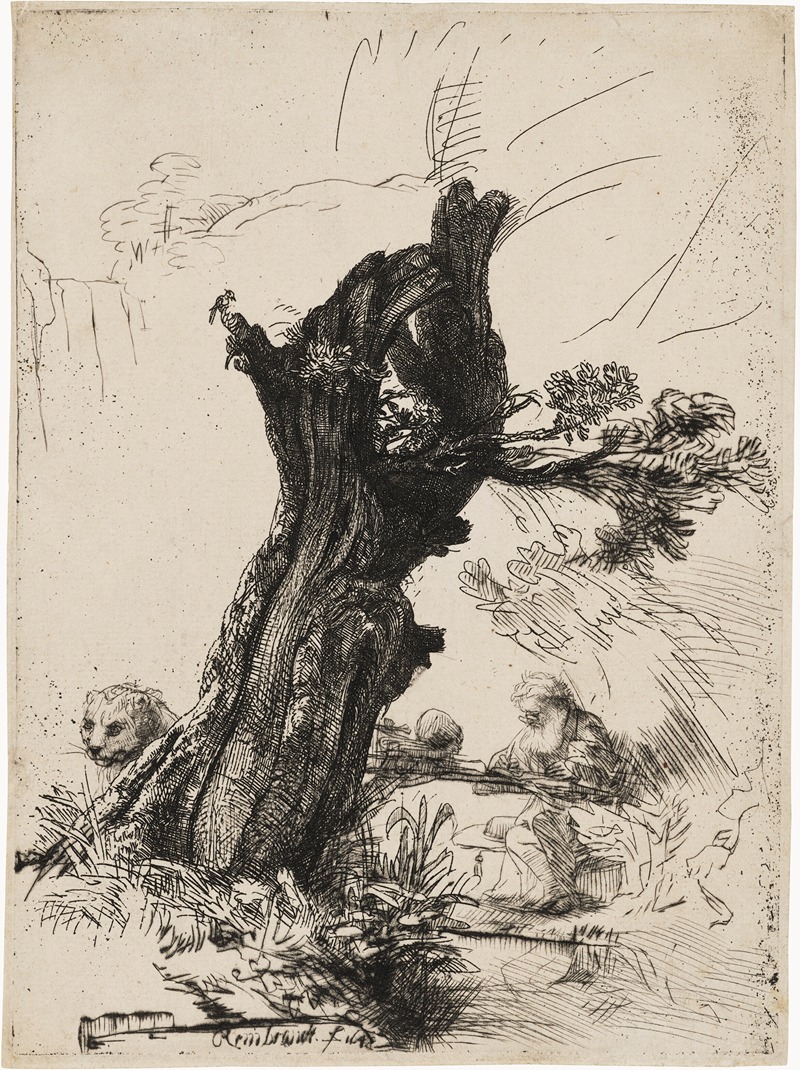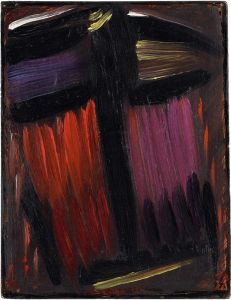
Saint Jerome beside a Pollard Willow
A hand-painted replica of Rembrandt van Rijn’s masterpiece Saint Jerome beside a Pollard Willow, meticulously crafted by professional artists to capture the true essence of the original. Each piece is created with museum-quality canvas and rare mineral pigments, carefully painted by experienced artists with delicate brushstrokes and rich, layered colors to perfectly recreate the texture of the original artwork. Unlike machine-printed reproductions, this hand-painted version brings the painting to life, infused with the artist’s emotions and skill in every stroke. Whether for personal collection or home decoration, it instantly elevates the artistic atmosphere of any space.
"Saint Jerome beside a Pollard Willow" is an etching created by the renowned Dutch artist Rembrandt van Rijn. This artwork is part of Rembrandt's extensive body of work that includes paintings, drawings, and prints, and it exemplifies his mastery in the medium of etching.
Rembrandt Harmenszoon van Rijn, born on July 15, 1606, in Leiden, Netherlands, is widely regarded as one of the greatest visual artists in the history of art and the most important in Dutch art history. His contributions to art include a wide range of subjects, from portraits and landscapes to biblical and mythological scenes.
The etching "Saint Jerome beside a Pollard Willow" was created in 1648. Saint Jerome, one of the four great Latin Fathers of the Church, is often depicted in art as a scholarly figure, frequently shown in his study or in a wilderness setting, translating the Bible into Latin (the Vulgate). In this particular etching, Rembrandt portrays Saint Jerome in a contemplative pose beside a pollard willow, a type of tree that has been pruned to promote new growth.
The composition of the etching is notable for its detailed and expressive use of line, which is characteristic of Rembrandt's etching technique. The figure of Saint Jerome is rendered with a sense of introspection and tranquility, while the surrounding landscape, including the pollard willow, is depicted with a naturalistic and almost tactile quality. The use of light and shadow in the etching enhances the depth and realism of the scene, showcasing Rembrandt's skill in creating atmospheric effects.
Rembrandt's etchings are highly valued for their technical brilliance and emotional depth. "Saint Jerome beside a Pollard Willow" is no exception, as it captures both the physical presence and the spiritual essence of the subject. The etching reflects Rembrandt's interest in human character and his ability to convey complex emotions through simple yet powerful imagery.
This etching is part of Rembrandt's broader exploration of religious themes, which he approached with a deep sense of humanity and empathy. His works often emphasize the personal and introspective aspects of religious figures, making them relatable to viewers. "Saint Jerome beside a Pollard Willow" is a testament to Rembrandt's ability to blend the sacred and the everyday, creating a timeless and moving piece of art.
Today, Rembrandt's etchings, including "Saint Jerome beside a Pollard Willow," are held in high esteem by art historians and collectors. They are studied for their technical innovation and their profound impact on the development of printmaking. Rembrandt's influence extends beyond his lifetime, as his works continue to inspire and captivate audiences around the world.


















